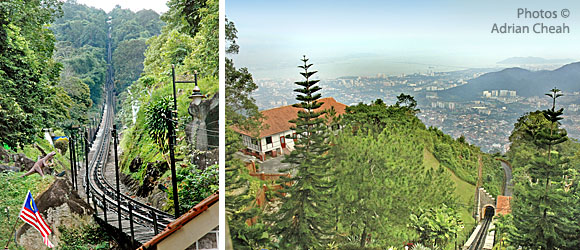Little India of George Town

Not many visitors and tourists to George Town's famous Little India enclave know that the area's name was adopted by the local authorities only in 1991. However, the idea was initially put forth by Datuk Mustafa Jumabhoy, the president of the Indian Chamber of Commerce , during his first term from 1968 to 1969. The notion did not take off and it took more than two decades before it would come to fruition during his second term as president from 1991 to 1993. The State Executive Councillor of Tourism, Culture and the Arts at that time, Datuk Kee Phaik Cheen, latched on to the idea and helped to launch it.
But whatever it is named, visitors hardly fail to sense the remarkable nostalgic charm and almost innocent simplicity of the area. And no wonder. Little India breathes a rich living history that spans over two centuries. The culture here throbs with antiquity and tradition.
Continue Reading
History of Little India

This meticulously regimented network was among the earliest parts of George Town planned under the administration of Sir Francis Light, the English founder of Penang. The area is hence now referred to as the "Francis Light Grid" – a rectangular network bordered by Leith Street, Beach Street, Chulia Street and Pitt Street (now Jalan Masjid Kapitan Keling).
Continue Reading
Chine Blue – an insight into Cheong Fatt Tze Mansion

Like a fragment from a scroll painting, an exotic indigo-blue mansion, with graceful, curved windows and a peaked, tiled roof, remains in the midst of Penang's modern high-rises. This rare survivor of old Penang, constructed in a Chinese-courtyard style with Western art-nouveau features, reflects the complex personality of its builder Cheong Fatt Tze. Called the "Rockefeller of the East", he was the most flamboyant of all Penang's multimillionaire towkays during the island's heyday of wealthy magnates.
Continue Reading
Street Art of George Town, Penang
Take an amazing tour around the UNESCO World Heritage City of George Town, Penang to discover the unique wrought-iron caricatures with anecdotal descriptions of the street that they adorn.
Also within the heritage enclave are street art installations that have gain popularity among both visitors and locals alike. The street art all started off with a project called Mirrors George Town by George Town Festival 2012. Through this project, the talented efforts by Lithuanian artist, Ernest Zacharevic has drawn much attention.
Continue Reading
Fort Cornwallis – the Star on the North East Coast of Penang

The star-shaped Fort Cornwallis marks the point where Francis Light and crew landed on 11 August 1786 to "take possession" of the island from the Sultan of Kedah. This date was also the birth date of Prince Charles and hence Francis Light named Pulau Pinang as the Prince of Wales Island.
Continue Reading
Clan Jetties of Penang

"The wooden stilts are replaced every five years or so" explained Siew Pheng as we walked around the jetty. Siew Pheng, born and raised on Chew Jetty goes on to tell us that this labor-intensive task of replacing the wooden stilts is a dying trade as only a few old hands practice the skill. Many youngsters prefer not to live at the jetty, but in apartments and houses on Penang island itself, as the maintenance of these houses is backbreaking work.
Continue Reading





















